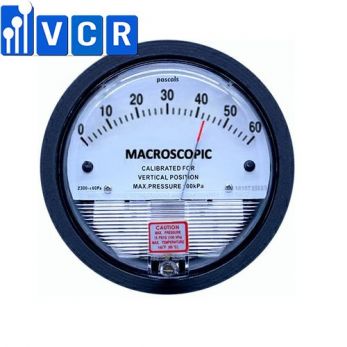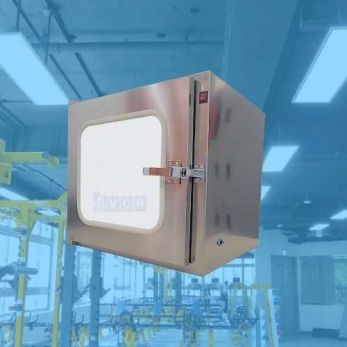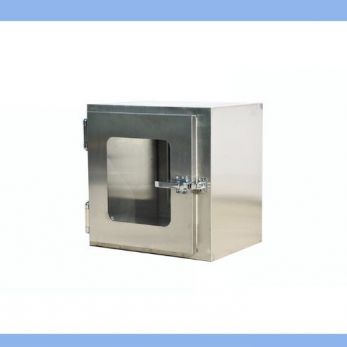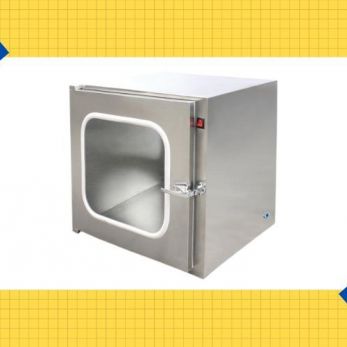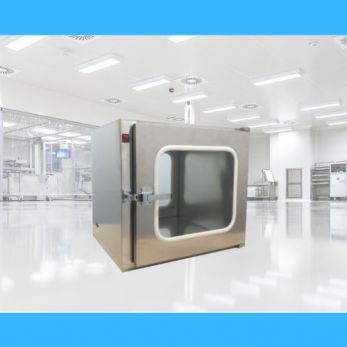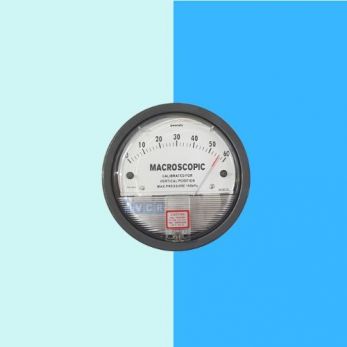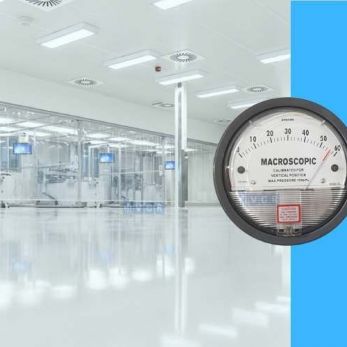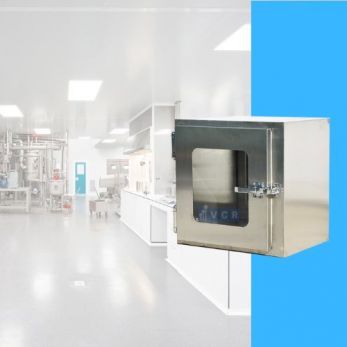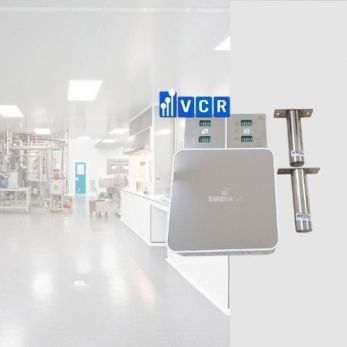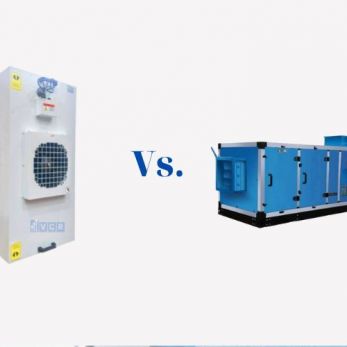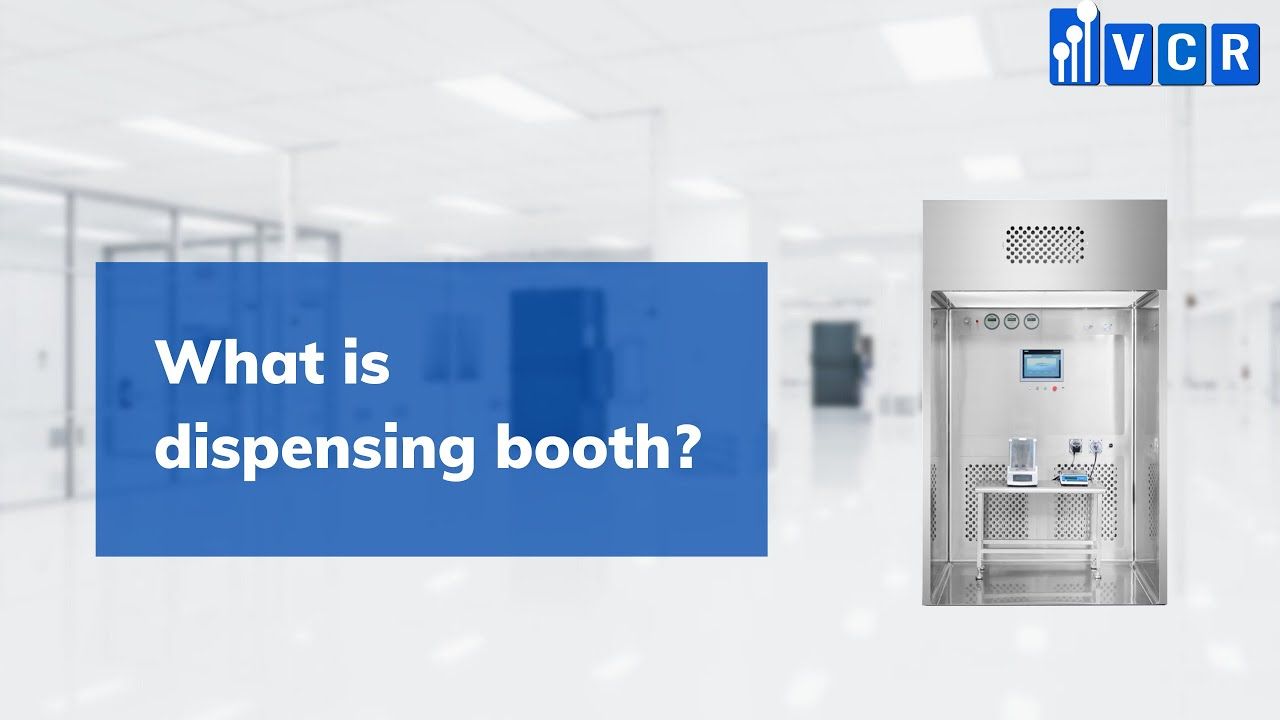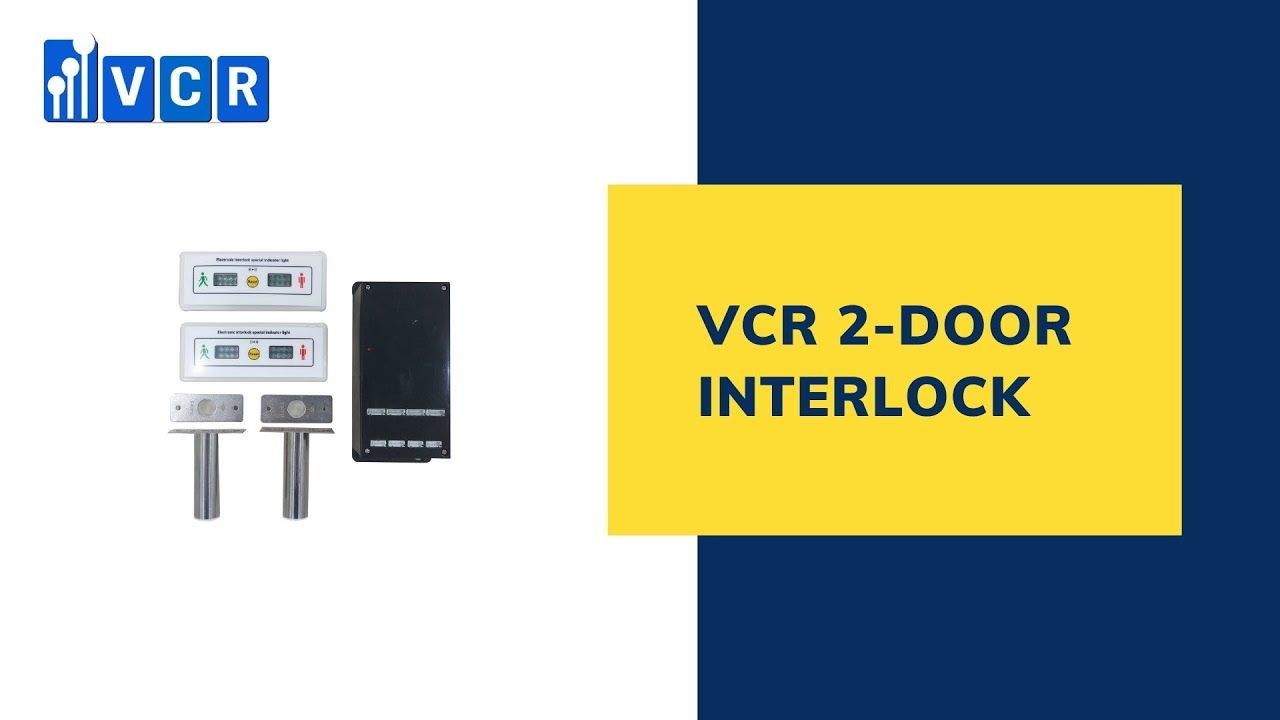What is blower filter unit?
What is BFU stands for blower filter unit, which is mainly composed of box, fan, primary air filter, damping layer, lamps, etc. BFU can be mounted or placed on the ground. It has compact structure and is easy to use. It can be used as a single unit or
In environments where air quality is critical, the Blower Filter Unit (BFU) plays a vital role in ensuring clean and contamination-free air. Used extensively in cleanrooms, laboratories, and controlled environments, BFUs help maintain strict air purity standards by efficiently filtering airborne particles. By combining a high-performance blower and an advanced filtration system, a BFU ensures a steady flow of clean air, preventing contaminants from compromising sensitive processes. Whether in pharmaceutical manufacturing, electronics production, or healthcare settings, BFUs are essential for achieving optimal air filtration and maintaining a controlled atmosphere.
I. What is BFU?
BFU or blower filter unit is a type of air-cleaning device in cleanroom, which is mainly composed of box, fan, primary air filter, damping layer, lamps, etc.
BFU can be mounted or placed on the ground. It has compact structure and is easy to use.
It can be used as a single unit or connected together to form a belt-shaped clean area.

II. Blower filter unit characteristics
- The purification level of BFU is class 100.
- The BFU has a simple structure and is very convenient for maintenance.
- Blower filter unit can save space and solve the problem of narrow maintenance space at the top of the cleanroom ceiling.
- The box body of BFU is made of high-quality aluminum plate, which has many advantages such as lightweight and strong corrosion resistance.
- Blower filter unit is designed with a special flow channel and current sharing system, which has low noise and uniform air velocity.
- BFU uses a high-efficiency centrifugal fan, which has the advantages of long service life, low noise, maintenance-free, and low vibration.
- The specifications of BFU:
Air velocity is 0.3m/s to 0.5m/s
Noise is less than or equal to 60dB
Power supply is 220V, 50Hz.
III. How Does a Blower Filter Unit Work?
A Blower Filter Unit (BFU) operates through a well-defined mechanism that ensures continuous air purification, making it an essential component in cleanroom environments, laboratories, and industrial applications. The working principle of a BFU revolves around three key stages: air intake, filtration, and clean air distribution.
-
Air Intake Process
The BFU begins its operation by drawing in ambient air from its surroundings. This air may contain various contaminants, including dust, bacteria, and microscopic particles that can compromise product quality and sterile environments. The blower fan inside the Blower Filter Unit creates a powerful suction effect, ensuring a consistent airflow into the system.
-
Filtration Through HEPA/ULPA Filter
Once the air enters the BFU, it passes through a High-Efficiency Particulate Air (HEPA) filter or an Ultra-Low Penetration Air (ULPA) filter, depending on the required cleanliness level. These filters are designed to capture up to 99.99% of airborne particles as small as 0.3 microns (HEPA) or even 0.12 microns (ULPA). This crucial step effectively removes dust, microbes, and other contaminants, ensuring the air meets strict cleanroom standards.
-
Clean Air Distribution
After passing through the filtration system, the purified air is evenly distributed into the cleanroom or controlled environment. The BFU is engineered to maintain a laminar airflow, reducing turbulence and preventing the reintroduction of contaminants. This ensures a continuous supply of clean air, maintaining the desired cleanliness level in industries such as pharmaceutical production, semiconductor manufacturing, and biotechnology.
How BFU Helps Maintain Clean Air Quality
By consistently filtering and distributing purified air, a Blower Filter Unit plays a crucial role in maintaining optimal cleanroom conditions. Its ability to remove harmful particles minimizes the risk of product contamination, microbial growth, and airborne pollutants, which is vital in sensitive industrial and medical settings. Moreover, BFUs contribute to energy efficiency by circulating filtered air effectively, reducing the need for excessive ventilation systems.
With a BFU, companies can ensure compliance with ISO cleanroom classifications, improve workplace safety, and enhance the overall quality of their products. Investing in the right Blower Filter Unit guarantees superior air filtration, protecting both personnel and production processes from unwanted contamination.
IV. Key Benefits of Using a Blower Filter Unit
A Blower Filter Unit (BFU) offers a range of advantages that make it an essential component in cleanrooms and controlled environments. Designed to provide high-efficiency air filtration, these units help maintain strict air quality standards while ensuring energy efficiency, ease of maintenance, and customization options. Below are the key benefits of using a BFU:
1. High-Efficiency Air Filtration
One of the most significant advantages of a Blower Filter Unit is its ability to remove airborne particles as small as 0.3 microns when equipped with a HEPA filter, or as small as 0.12 microns with an ULPA filter. This ensures that dust, bacteria, and other microscopic contaminants are effectively filtered out, making BFUs indispensable in industries such as pharmaceutical manufacturing, biotechnology, and semiconductor production.
2. Energy-Saving Design
BFUs are engineered for low energy consumption without compromising filtration performance. The built-in blower fan operates efficiently to circulate clean air while reducing overall HVAC load. This translates to lower operational costs compared to traditional air handling systems, making Blower Filter Units a cost-effective solution for facilities that require continuous air purification.
3. Easy Installation and Maintenance
Unlike complex air filtration systems that require extensive ductwork and frequent servicing, BFUs are designed for simple installation and minimal maintenance. The modular design allows for quick filter replacements, and the self-contained structure eliminates the need for external air supply connections. This ease of maintenance ensures uninterrupted cleanroom operations, reducing downtime and increasing productivity.
4. Customizable Options
Blower Filter Units come in various sizes, airflow capacities, and filter types, allowing businesses to choose the best solution for their specific needs. Whether it’s a compact unit for localized filtration or a larger BFU for full-room air purification, these systems can be
V. Applications of Blower Filter Unit (BFU)
A Blower Filter Unit (BFU) is a crucial component in environments where air purity and contamination control are essential. By providing high-efficiency air filtration, BFUs help maintain clean and controlled atmospheres across various industries. Below are the primary applications where BFUs are widely used:
1. Cleanrooms – Pharmaceutical, Semiconductor, and Biotech Industries
Cleanrooms require strict air quality control to ensure product integrity and prevent contamination. BFUs play a critical role in industries such as:
- Pharmaceutical manufacturing – Preventing airborne contamination in drug production.
- Semiconductor fabrication – Protecting sensitive microelectronics from dust and static particles.
- Biotechnology labs – Ensuring sterile conditions for biological research and production.
By maintaining ISO cleanroom classifications, BFUs help create a controlled environment that meets industry standards.
2. Laboratories – Medical and Research Facilities
In medical and research laboratories, maintaining air purity is crucial for both safety and accuracy. BFUs are used to:
- Ensure sterile conditions in microbiology and chemical testing labs.
- Protect samples and experiments from airborne contamination.
- Maintain aerosol control in infectious disease research labs.
Their ability to provide consistent, filtered airflow makes BFUs a reliable choice for precision-driven laboratory settings.
3. Hospital and Healthcare Environments – Operating Rooms, ICUs
Hospitals require strict air filtration to prevent infections and maintain hygienic conditions. BFUs are installed in:
- Operating rooms (ORs) – Ensuring sterile air for surgical procedures.
- Intensive care units (ICUs) – Protecting vulnerable patients from airborne infections.
- Isolation rooms – Preventing the spread of airborne diseases.
By integrating HEPA/ULPA filters, Blower Filter Units help maintain hospital-grade air quality, ensuring patient safety and regulatory compliance.
4. Industrial Manufacturing – Electronics, Food Processing
Many industrial processes demand clean air to protect products, workers, and machinery. BFUs are widely used in:
- Electronics manufacturing – Preventing dust contamination in precision assembly.
- Food and beverage processing – Ensuring hygienic conditions and meeting food safety standards.
- Aerospace and automotive industries – Providing controlled environments for sensitive production lines.
By removing particulate matter and airborne pollutants, BFUs help manufacturers maintain consistent product quality and operational efficiency.
VI. How to Choose the Right Blower Filter Unit?
Selecting the right Blower Filter Unit (BFU) is crucial for ensuring optimal air filtration and cleanroom efficiency. Different industries and applications have unique requirements, making it essential to evaluate several key factors before making a purchase. Below are the most important considerations when choosing a BFU.
1. Airflow Capacity (CFM, m³/h)
The airflow capacity of a BFU determines how much air it can filter and circulate within a given space. It is typically measured in Cubic Feet per Minute (CFM) or Cubic Meters per Hour (m³/h).
- High airflow capacity is required for large cleanrooms or manufacturing spaces.
- Lower airflow capacity may be suitable for localized air filtration, such as workbenches or small labs.
Choosing the correct CFM/m³/h ensures that the BFU effectively maintains the desired cleanliness level.
2. Filter Type (HEPA vs. ULPA)
The filtration efficiency of a BFU depends on the type of filter it uses:
- HEPA Filters (High-Efficiency Particulate Air) – Removes 99.99% of particles ≥ 0.3 microns. Suitable for most cleanroom applications, laboratories, and industrial manufacturing.
- ULPA Filters (Ultra-Low Penetration Air) – Removes 99.999% of particles ≥ 0.12 microns. Recommended for pharmaceutical, biotech, and semiconductor industries, where extremely high air purity is required.
Understanding the contamination level of your environment helps in selecting the appropriate filter.
3. Noise Level and Energy Consumption
Since BFUs operate continuously, noise levels and energy efficiency are critical factors to consider:
- Low-noise BFUs are preferred in hospitals, laboratories, and offices to minimize disruptions.
- Energy-efficient models reduce operating costs and support sustainable cleanroom management.
Opting for a BFU with an energy-saving motor and optimized airflow design ensures cost-effectiveness without compromising performance.
4. Installation Requirements
Depending on the cleanroom setup, BFUs can be installed in different ways:
- Ceiling-mounted BFUs – Ideal for cleanrooms and large industrial environments.
- Standalone or portable BFUs – Best for localized filtration in labs, workstations, and research centers.
- Modular BFUs – Flexible solutions for custom cleanroom designs.
Choosing the right installation type ensures efficient airflow distribution and seamless integration with existing cleanroom infrastructure.
Recommendations Based on Different Industries
To help businesses select the right Blower Filter Unit, here are industry-specific recommendations:
- Pharmaceutical & Biotechnology – ULPA filter BFU, low noise, high-efficiency air distribution.
- Semiconductor & Electronics – HEPA/ULPA BFU, anti-static design, precise airflow control.
- Medical & Healthcare – Low-noise BFU, HEPA filtration, compliance with hospital-grade air purity standards.
- Industrial Manufacturing – High airflow BFU, durable casing, energy-efficient motor.
- Food Processing – Easy-to-clean BFU, stainless steel housing, HEPA filtration for hygiene compliance.
VII. Maintenance and Troubleshooting of Blower Filter Unit (BFU)
To ensure optimal performance and longevity, Blower Filter Units (BFUs) require regular maintenance and timely troubleshooting. A well-maintained BFU helps maintain air purity, energy efficiency, and system reliability. Below are the essential maintenance practices and common troubleshooting solutions for BFUs.
How to Properly Maintain a Blower Filter Unit
1. Regular Filter Replacement
The HEPA/ULPA filters inside the BFU gradually accumulate dust and airborne contaminants, reducing airflow efficiency. To maintain optimal filtration:
- Check filter condition regularly (typically every 3–6 months, depending on usage).
- Replace filters when airflow decreases or contamination levels rise.
- Use manufacturer-recommended filters to ensure proper compatibility and efficiency.
Timely filter replacement ensures continuous air purity and prevents system overload.
2. Checking Airflow Performance
A decline in airflow rate can indicate filter clogging, blower inefficiency, or system blockages. To prevent performance issues:
- Monitor air velocity and pressure differentials using installed airflow sensors or gauges.
- Inspect fan speed and motor performance to detect any unusual fluctuations.
- Ensure no obstructions in air intake or outlet vents.
Maintaining consistent airflow performance is essential for cleanroom compliance and contamination control.
3. Cleaning Blower Components
Accumulated dust and debris on blower fans and internal components can cause efficiency loss and increased energy consumption. To maintain optimal functionality:
- Turn off power before performing any cleaning or maintenance.
- Use compressed air or a soft brush to remove dust from blower fans.
- Inspect motor bearings and lubricate if necessary.
- Check for any loose or damaged parts, such as screws, fan blades, or electrical connections.
Routine cleaning of blower components helps extend the lifespan of the unit and reduces operational costs.
Common Issues and Solutions
1. Reduced Airflow or Weak Blower Performance
Possible Causes:
- Clogged or dirty filters
- Blocked air intake or outlet vents
- Malfunctioning blower fan or motor
Solution:
✔ Replace or clean clogged filters
✔ Ensure unobstructed airflow in and out of the BFU
✔ Check blower fan operation and inspect for motor damage
2. Excessive Noise or Vibration
Possible Causes:
- Loose components (screws, fan blades, motor mountings)
- Imbalanced fan blades
- Motor wear and tear
Solution:
✔ Tighten any loose parts to minimize vibration
✔ Inspect fan blades for damage or misalignment and replace if necessary
✔ Lubricate motor bearings or replace worn-out components
3. Unstable or Inconsistent Air Pressure
Possible Causes:
- Dirty or clogged filters restricting airflow
- Issues with blower speed or motor power fluctuations
- Leakage in the BFU casing or duct connections
Solution:
✔ Replace clogged filters to restore airflow
✔ Check blower motor settings and ensure proper electrical supply
✔ Inspect for leaks and seal any gaps in the unit
4. BFU Not Powering On or Stopping Unexpectedly
Possible Causes:
- Electrical connection issues
- Overheated motor due to prolonged usage
- Damaged circuit board or power supply unit
Solution:
✔ Check power connections and circuit breakers for faults
✔ Allow the unit to cool down if overheated and inspect the motor
✔ Consult a technician for electrical or circuit board issues
Vietnam Cleanroom Equipment (VCR) specializes in providing cleanroom equipment for construction contractors. We provide high-quality products with competitive prices and large quantities nationwide. The equipment includes:
Differential pressure gauge, FFU Fan Filter Unit, Pass box, Clean room air filter, HEPA box, Clean booth, cleanroom steel door, Isolator cabinet, and other equipment
For details, please refer to Vietnam cleanroom equipment official website







